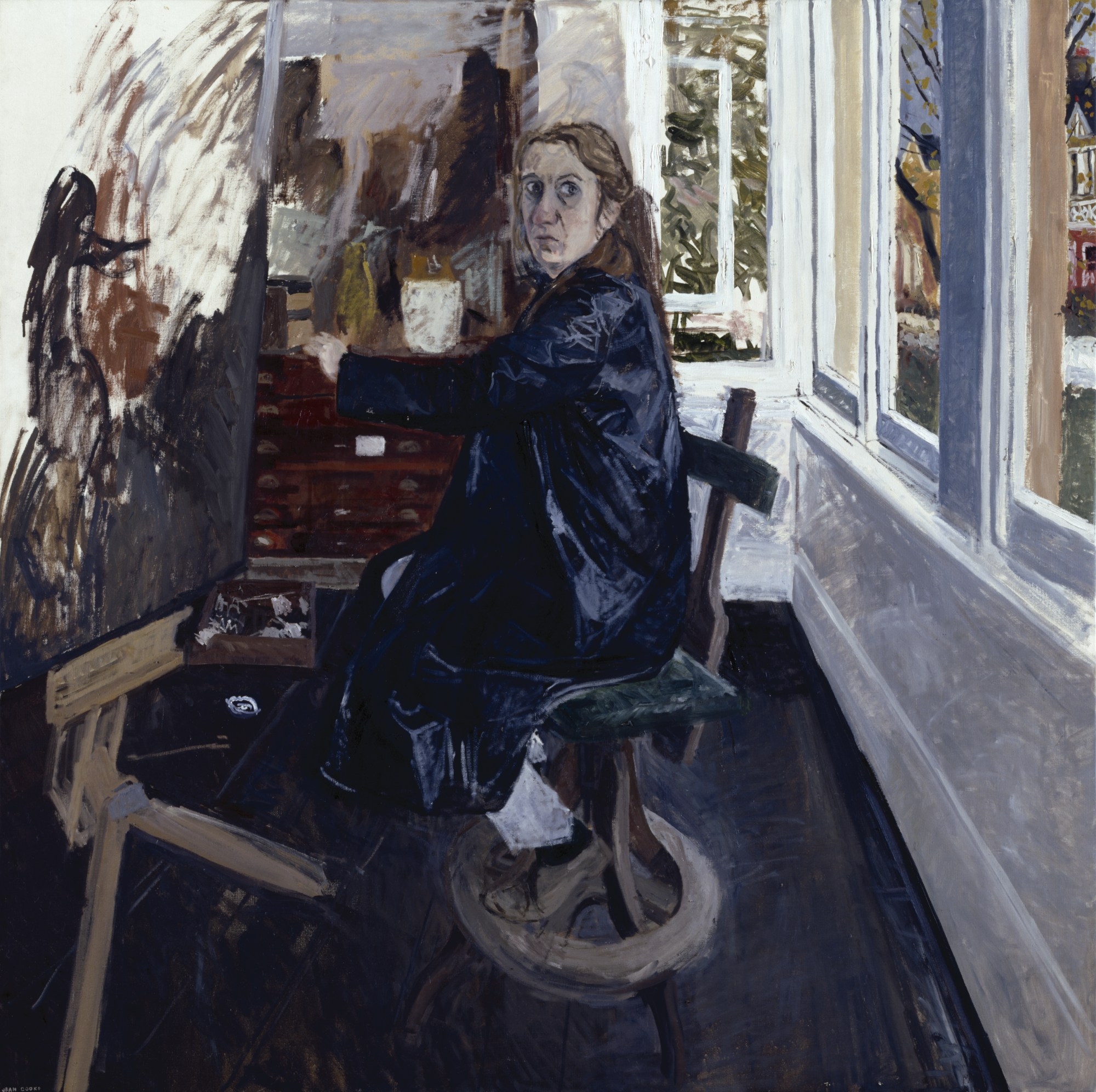
In this sparingly painted portrait, Jean Cooke captures herself in a moment of deep self-examination.
The work was painted at her home in Blackheath, south-east London, where she lived with her husband, the artist John Bratby. It is characteristically domestic and unglamourous; Cooke often depicted the raw reality of her surroundings and painted herself in a blunt, defiant manner. Cooke made self-portraits for a number of reasons: she has written, ‘sometimes I paint self-portraits to show off, sometimes to hide away in solitude, sometimes to say “Here I am”, sometimes to say “I want to be alone”. But always there is a searching for the unknown, the previously unperceived’.
It is difficult to be certain what ‘unknown’ Jean Cooke was seeking in painting this work, but the portrait holds hidden clues that reveal her deep determination and inner strength. Before embarking on this painting, Cooke had sworn never to make another self-portrait, but when her husband presented her with a Victorian ‘Merryweather’ brass fireman’s helmet as a gift, she was inspired to depict herself wearing it. The helmet, with its decorative metalwork and curved apex, was extremely heavy. Cooke recalled that she suffered from a sore neck while painting, constantly having to twist over her shoulder to study her reflection in the mirror. Despite the discomfort and physical effort, Cooke persevered. However, when Bratby abruptly gave the brass helmet away against Cooke’s wishes, she abandoned the painting. It was only on glimpsing the half-finished work through a window that she convinced herself she should finish the work, regardless of the lack of helmet that had inspired its creation. A faint outline of the brass helmet, with its curved horn-like top, is still visible above the artist’s head.
As this anecdote illustrates, Cooke and Bratby’s was a troubled relationship that started when they were art students in London. Bratby became increasingly violent and controlling of Cooke, particularly as her artistic reputation flourished. He demanded she sign her paintings with her maiden name, since he hated being the less famous Bratby. Bratby restricted his wife’s painting to just three hours a day and sometimes destroyed her canvases.
The relationship lasted for over a quarter of a century and Cooke and Bratby had four children together, but it was clearly emotionally abusive. They provided artistic sources for one another and regularly featured in the other’s works. Today their relationship seems a clear case of domestic abuse but, however Cooke viewed her situation, there was little support available to help her escape it at the time. By the 1970s – just a few years after this painting was made – Bratby’s behaviour had become so unpredictable, partially due to his excessive drinking, that Cooke ended the relationship and they divorced in 1977. The length of the relationship testifies to Cooke’s incredibly resilient character and positive attitude towards life in general. Even when her house burnt down in 2003 and she lost most of her possessions and paintings, Cooke remarked that she was grateful as it allowed her a fresh start as a painter. She was 75.
Paintings such as Blast Boadicea, with stories beyond the surface, allow us to revisit the life and work of artists who have been swept over in the rush of art history. They also reveal social norms of a different era and urge questions about how we consider artists, all harbouring their own personal struggles that form the background to their art.
January 2022




